Secret Gardens: Oxford Botanic Garden
Posted by SECRET GARDENER
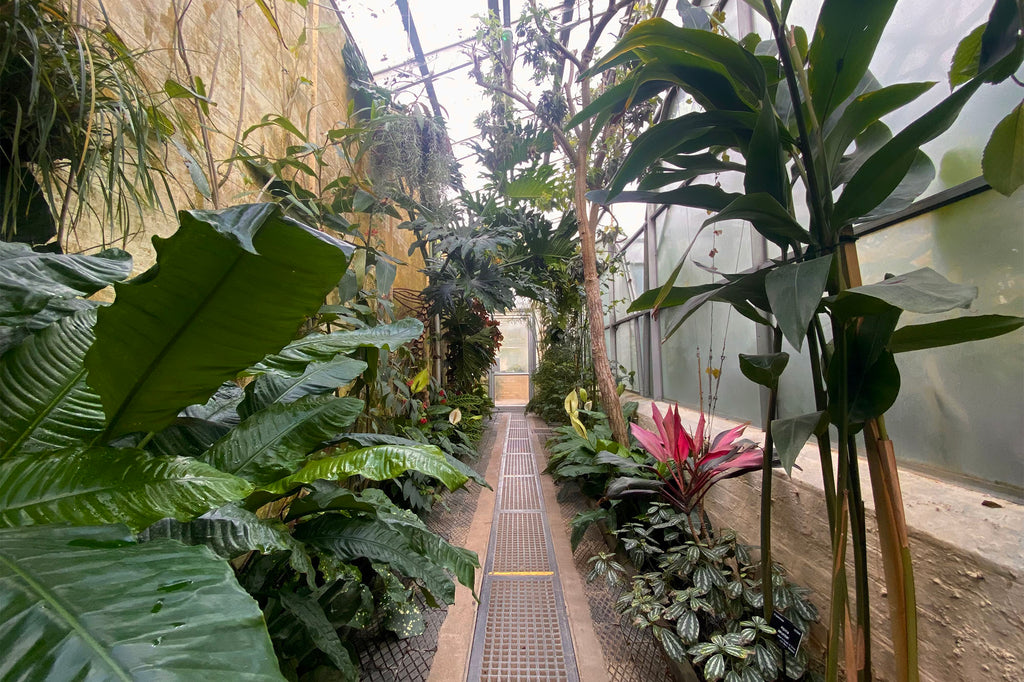
Exploring the oldest botanic garden in the UK
Oxford Botanic Garden is the UK’s oldest garden and one of the oldest in the world, founded in 1621. It was originally established by Henry Danvers, Earl of Danby, as a site to cultivate medicinal plants for research and teaching at the University of Oxford’s Medical School. For this reason, it was originally called the Oxford Physicke (Physic) Garden, until its name changed in 1840 when a laboratory was constructed for the intent of botanical research.

Above: the walkways in the garden as seen in the mid-winter months.
Today, the garden showcases over 6,000 plant species from around the globe, planted across the different glasshouses and outdoor pockets of the garden. It remains an important place of research and holds some extremely rare plants which cannot be found anywhere else in the world.
***
What plants to see in Oxford Botanic Garden
In the south-west corner of the Walled Garden there is a planted bed called ‘The 1648 Border.' The first superintendent of the garden, Jacob Bobart, compiled a list of all the plants which grew in the garden; in 1648 there were 1,600 plants.
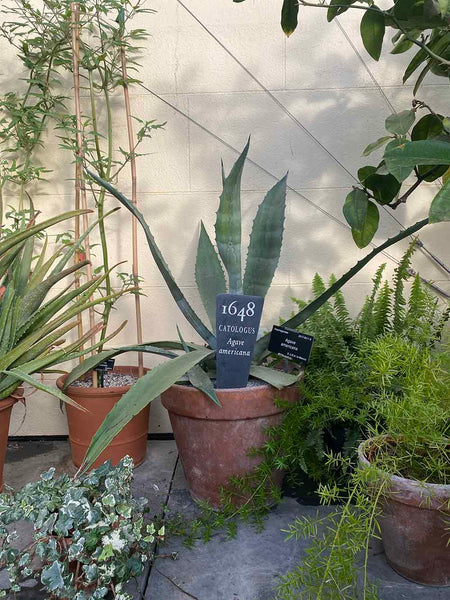
Since then, the list has grown (there are now over 6,000 different plant species!) but the 1648 border showcases a selection of plants from Bobart’s list to demonstrate what kinds of plants were grown in 17th Century gardens. The plants include a mixture of some species native to the UK, with others imported by explorers who travelled across Europe and Asia.

Above: in the Rock Garden at Oxford Botanic Garden.
One interesting plant that grows there is the Virginian spidewort (Tradescantia virginiana). It was originally sent to John Tradescant (a pioneering botanist said to have founded English gardening), from America. Tradescant worked in some of the greatest gardens of his time, and his tomb can be visited at Vauxhall’s Garden Museum.
Inside the Oxford Botanic Garden glasshouses
The first conservatories at Oxford Botanic Garden were built nearly 300 years ago! The glasshouses in their current location were built in 1850 when the garden was redesigned. There is a Waterlily House, Palm House, and Arid House & Carnivorous Plants House.
The most iconic house in the garden is without a doubt the Waterlily House. First built in 1851, it was constructed especially to allow the garden to house the giant Amazonian water lily (Victoria amazonica) native to South America.
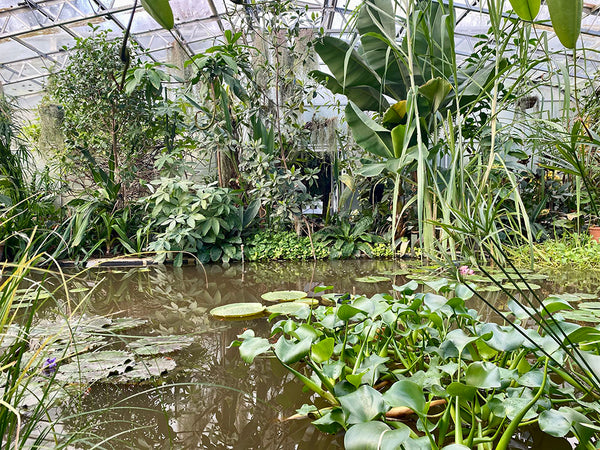
Above: Victoria cruziana and the hybrid Nymphaea x daubenyana grow in the pond.
Interesting facts about Oxford Botanic Garden
- The oldest tree at Oxford Botanic Garden is a yew tree which was planted in 1645.
- The first female gardeners were employed in the 1940s.
- In honour of the garden’s 400-year anniversary (2021), the beautiful pink Oxford Physic Rose was created. The site itself (Rose Lane) was actually renamed as such in 1834 because of the sheer number of roses which grew in the garden in the 18th Century!
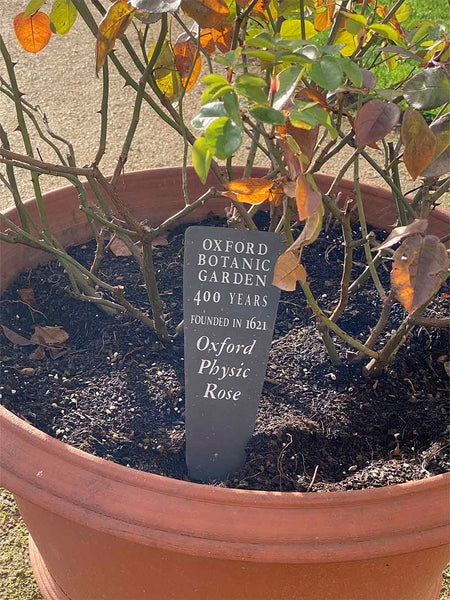 Above: the Oxford Physic Rose grows in the garden
Above: the Oxford Physic Rose grows in the garden
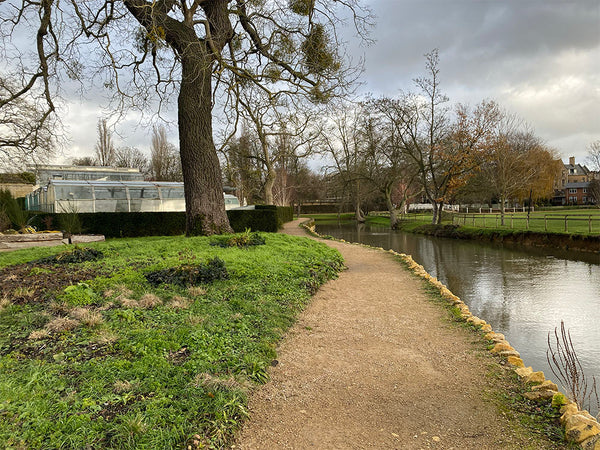
Above: the garden is on the banks of the River Cherwell
How to get to Oxford Botanic Garden
Rose Lane,
Oxford OX1 4AZ
Travel: The garden is a 25-minute walk through the high street from Oxford station, with rail links to London Paddington and London Marylebone stations. There are also trains to Manchester Piccadilly, Birmingham, and Bournemouth. There is a bus service from outside Oxford station. Bus routes 1 and 5 City take 16-minutes from Stop R2 to Stop K1 (Queen’s Lane), from which it is a few minutes’ walk to the garden. No on-site parking is available, but you can park outside the city and take a park and ride bus into town.
Entry: Tickets for adults start at £7.20 each, with pre-booking advised especially for weekend visits. Concessions available. Combined tickets for visiting the gardens and Magdalen College are also available. Book tickets on the Oxford Botanic Garden website.
Opening times: Daily, 10am – 4pm (last entry 3pm).

